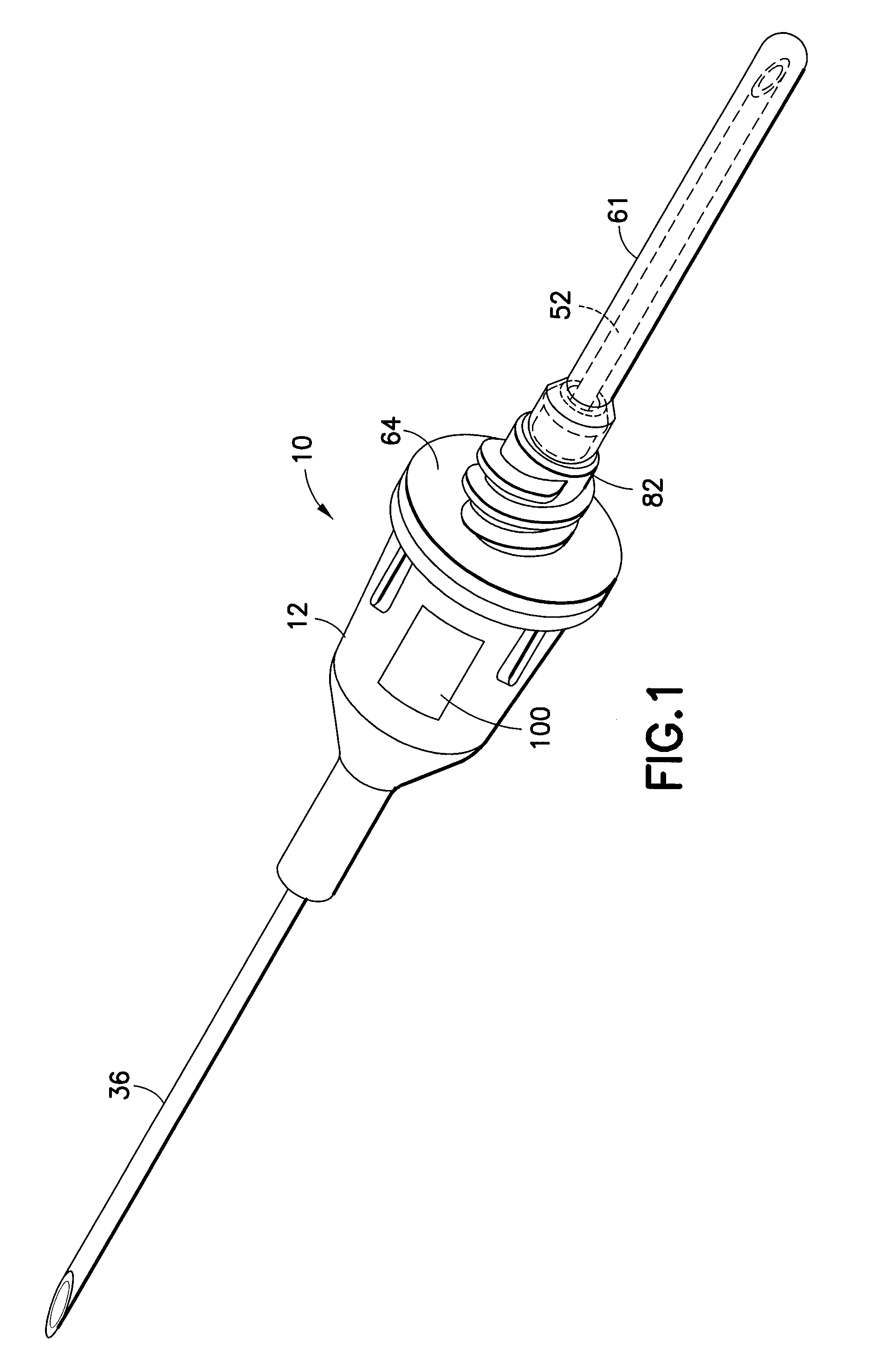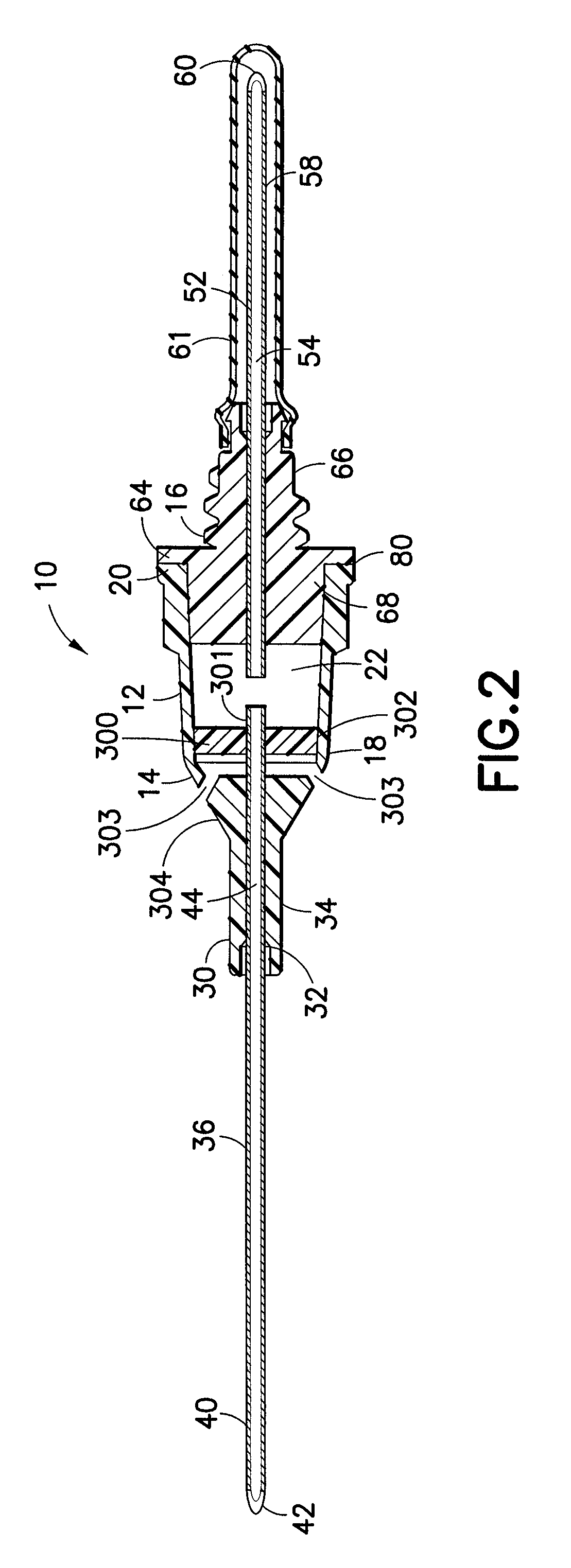Flashback blood collection needle
a blood collection needle and flashback technology, applied in medical science, packaging, diagnostics, etc., can solve problems such as platelet activation, contamination or other undesirable problems, and achieve the effects of promoting safe medical practice, preventing blood leakage, and high manufacturing efficiency
- Summary
- Abstract
- Description
- Claims
- Application Information
AI Technical Summary
Benefits of technology
Problems solved by technology
Method used
Image
Examples
Embodiment Construction
[0051]The present invention provides a self-venting blood collection needle assembly with a self-venting mechanism that permits escape of air, while preventing an outflow of fluid such as blood, that provides a visual indication of vein entry (“flashback”) upon collection of a blood or other fluid sample from a patient into one or more evacuated blood collection tubes.
[0052]It should be noted that the vent media could be, for example, a distinct physical element such as a plug or insert, a integral portion of a device that has been treated such as by laser drilling or has been formed in whole or in part from a porous material, or a coating, layer, etc. formed by disposing a material onto the device, e.g., by dipping, coating, spraying or the like.
[0053]A blood collection needle assembly in accordance with an embodiment of the subject invention is identified in FIG. 1. A needle assembly 10 includes a hub 12, which supports a fluid inlet needle (first cannula) 36 on one side and a flu...
PUM
 Login to View More
Login to View More Abstract
Description
Claims
Application Information
 Login to View More
Login to View More - R&D
- Intellectual Property
- Life Sciences
- Materials
- Tech Scout
- Unparalleled Data Quality
- Higher Quality Content
- 60% Fewer Hallucinations
Browse by: Latest US Patents, China's latest patents, Technical Efficacy Thesaurus, Application Domain, Technology Topic, Popular Technical Reports.
© 2025 PatSnap. All rights reserved.Legal|Privacy policy|Modern Slavery Act Transparency Statement|Sitemap|About US| Contact US: help@patsnap.com



